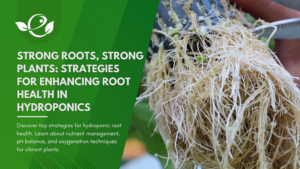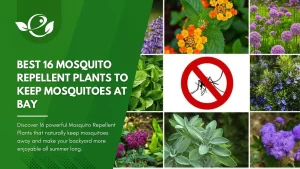Table of Contents
In the intricate world of agriculture, where the balance between yield and sustainability often hangs by a thread, even the smallest of pests can pose a significant threat. Among these is the chilli thrips, a tiny insect with the potential to cause extensive damage to crops if left unchecked. Despite their diminutive size, chilli thrips are a formidable adversary, capable of wreaking havoc on a variety of plants, from peppers to ornamental flora. As their populations grow, so does the urgency to implement effective control measures. Understanding how to manage and control chilli thrips is not just a necessity but a crucial step towards ensuring healthy crops and bountiful harvests.
This guide delves into the intricacies of chilli thrips, from identification and lifecycle to the various methods of control, including cultural, biological, and chemical strategies. By the end of this article, you’ll be equipped with the knowledge and tools to combat these pests effectively, safeguarding your crops against their destructive tendencies.
Identification of Chilli Thrips
Physical Characteristics
Chilli thrips, scientifically known as Scirtothrips dorsalis, are minute insects, typically measuring around 0.5 to 1.2 millimeters in length. They possess slender bodies with narrow wings that are fringed with fine hairs, giving them a delicate, almost ethereal appearance. Adult chilli thrips are generally pale yellow to light brown, with a slightly darker head and thorax. Due to their small size and translucent wings, they are often difficult to spot with the naked eye.
However, their presence can be inferred through the damage they inflict on plants. Unlike some other thrips species, chilli thrips feed on a wide range of host plants, making them particularly troublesome. Identifying these pests early is key to preventing an infestation from taking hold.
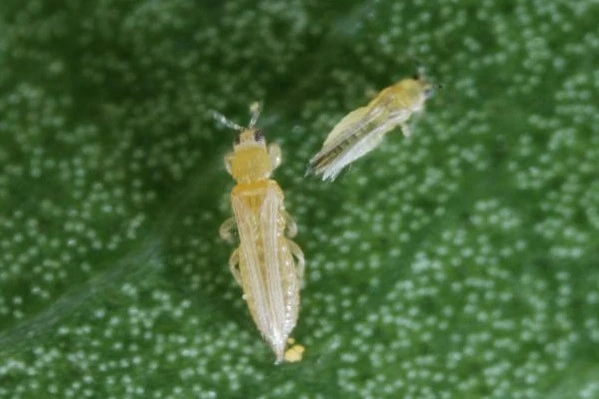
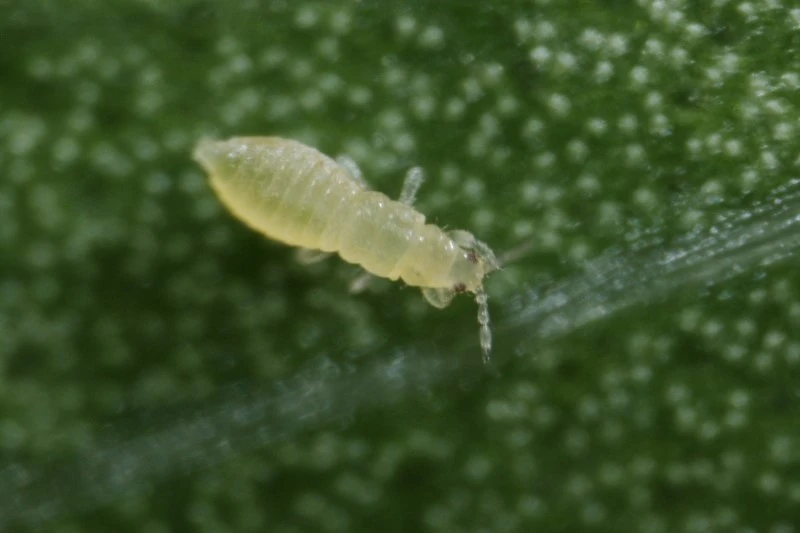
Lifecycle of Chilli Thrips
Understanding the lifecycle of chilli thrips is essential for effective control. Like most thrips species, chilli thrips undergo several stages of development: egg, larva, pupa, and adult.
- Egg Stage: Female chilli thrips lay their eggs inside the plant tissue, usually on the leaves or buds. The eggs are tiny, barely visible without magnification, and typically hatch within 2 to 7 days, depending on environmental conditions.
- Larval Stage: After hatching, the larvae begin feeding on the plant tissue. They go through two instars (larval stages) over the course of 4 to 9 days. During this time, they are particularly destructive, causing visible damage to the plant.
- Pupal Stage: Once the larvae have matured, they drop to the soil or plant debris to pupate. The pupal stage lasts around 2 to 3 days, after which the adult thrips emerge.
- Adult Stage: Adult chilli thrips are capable of flight and will quickly spread to other parts of the plant or nearby plants. The entire lifecycle from egg to adult can be completed in as little as 12 to 22 days, depending on temperature and humidity, allowing for rapid population growth under favorable conditions.
What caused it?
Symptoms are caused by two species of thrips, Scirtothrips dorsalis and Rhipiphorothrips cruentatus. Scirtothrips dorsalis adult is straw yellow in color. Females lay about 50 grayish-white bean-shaped eggs, usually inside of young leaves and buds. As populations increase, they will also choose the surface of mature leaf blades. The incubation period is 3-8 days. The newly hatched nymphs are minute, with a reddish body that later turns yellowish-brown.
Nymphs entering the metamorphic process drop off of the plant and then complete their development in loose soil or leaf litter at the base of their host. Pupal period lasts 2-5 days. Adult R. cruentatus are minute, slender, soft-bodied insects with heavily fringed wings, blackish brown with yellowish wings and measure 1.4mm long.
Symptoms of Infestation
The most telling sign of a chilli thrips infestation is the characteristic damage they cause to plants. As they feed, chilli thrips puncture plant tissues with their needle-like mouthparts, sucking out cell contents and leaving behind a trail of destruction. The following symptoms are commonly associated with chilli thrips damage:
- Both nymphs and adults feed on the underside of young leaves. They rasp and pierce the tissues and suck the oozing liquids.
- The infested leaves develop light brown to silvery spots and may show signs of deformation (curling). Affected leaves may curl, crinkle, or become distorted in shape, which can stunt the plant’s growth.
- In extreme cases there is total deformation of leaves and later premature defoliation of the plant.
- On fruits, especially peppers, you may notice scarring or blemishes that render the produce unsellable.
- Feeding on flowers shows as streaking of petals and may lead to drying and shedding. Scabs, spotting and distortion of fruits will reduce their market value. Although infestation occurs throughout the year, it peaks during drier months and in soils with excessive nitrogen fertilizer application.
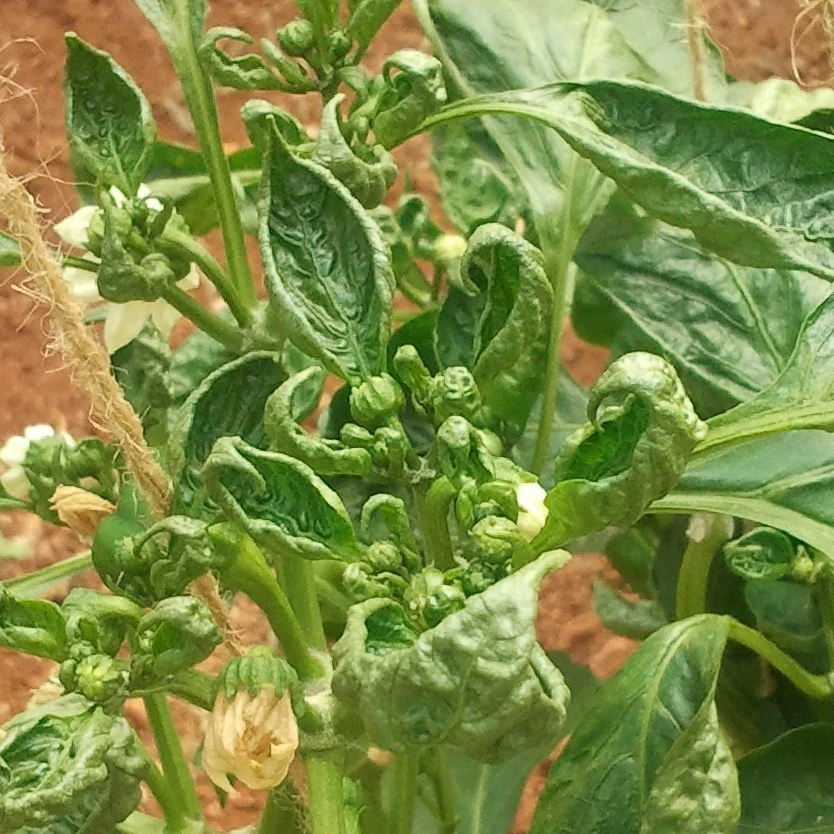
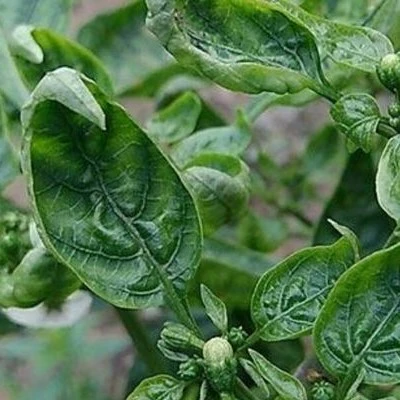
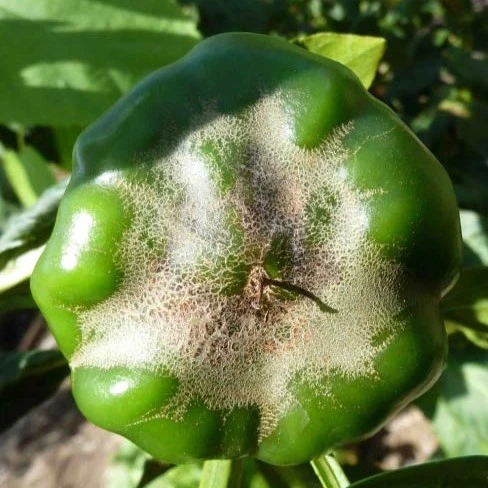
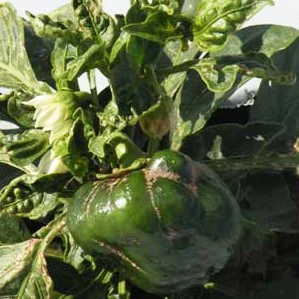
Early detection of these symptoms is critical for managing an infestation before it becomes widespread.
Methods of Controlling Chilli Thrips
Effectively controlling chilli thrips requires a multifaceted approach that includes cultural, biological, and chemical strategies. Integrated Pest Management (IPM) combines these methods to achieve long-term control with minimal environmental impact.
Cultural Control Methods of Chilli Thrips
Cultural controls are the first line of defense against chilli thrips. These methods focus on creating an environment that is less conducive to thrips infestations, thereby reducing the likelihood of a population explosion.
- Crop Rotation: Crop rotation is a proven method for managing pests and diseases in agriculture. By rotating crops, particularly those that are not susceptible to chilli thrips, you can disrupt their lifecycle and reduce their numbers. For example, alternating between a susceptible crop like peppers and a less susceptible one can help break the cycle of infestation. It’s important to plan rotations strategically, considering both the lifecycle of the thrips and the seasonal timing of crops.
- Sanitation: Maintaining good field sanitation is crucial in preventing thrips from finding refuge in plant debris. Chilli thrips often overwinter in plant residues, so removing weeds, fallen leaves, and other debris from the growing area is essential. Regularly cleaning up around your plants and removing any infested plant material can significantly reduce the thrips population.
- Planting Resistant Varieties: One of the most effective cultural practices is the use of chilli varieties that are resistant to thrips. Breeding programs have developed several varieties of peppers and other crops that are less attractive or more resistant to chilli thrips. By choosing these varieties, you can minimize the impact of thrips on your crops.
Biological Control of Chilli Thrips
Biological control involves the use of natural predators, parasites, or pathogens to control pest populations. This method is environmentally friendly and can be highly effective when integrated with other control strategies.
Recommendations
We recommend following organic control methods in the early stages of a disease or when the crop is close to harvesting. In more advanced stages of a disease, please follow chemical control measures. Mixing or applying different products at the same time is not recommended.
Various biological controlling agents like minute pirate bugs of the genus Orius, and the phytoseiid mites Neoseiulus cucumeris and Amblyseius swirskii have been reported to provide effective control of thrips in pomegranate. Predatory mites like Euseius sojaensis, E. hibisci and E. tularensis have also been used effectively to control populations on alternative hosts like pepper and grapes. Spread diatomaceous earth around the plant base and the plant’s leaves to desiccate the thrips and their larvae (in the evening). Apply neem oil, spinetoram, or spinosad to both sides of the leaves and around the plant’s base.
1. Predatory Insects
Several predatory insects naturally feed on thrips and can help keep their populations in check. Some of the most effective predators include:
- Ladybugs (Coccinellidae): Both adult ladybugs and their larvae are voracious feeders of thrips. They can be introduced into the garden or farm as part of a biological control program.
- Predatory Mites (Phytoseiidae): These tiny arachnids are effective at preying on thrips larvae. Predatory mites are particularly useful in greenhouse settings where chemical controls may be limited.
- Minute Pirate Bugs (Orius spp.): These small insects are aggressive predators of thrips at all life stages. They are often released in fields or greenhouses where thrips are a problem.
2. Parasitic Wasps
Parasitic wasps, such as those from the Trichogramma genus, can be effective against chilli thrips. These wasps lay their eggs inside thrips larvae, and the developing wasp larvae consume the thrips from the inside out. While parasitic wasps may not completely eradicate a thrips population, they can significantly reduce numbers and prevent outbreaks.
3. Beneficial Nematodes
Beneficial nematodes, particularly those from the genus Steinernema, are microscopic worms that can be used to control thrips larvae in the soil. When applied to the soil, these nematodes seek out and infect thrips larvae, releasing bacteria that kill the host. This method is especially useful for controlling the soil-dwelling stages of the thrips lifecycle.
Chemical Control of Chilli Thrips
While cultural and biological methods are often preferred due to their sustainability, chemical control can be necessary in cases of severe infestation. However, it is important to use insecticides judiciously to avoid resistance and minimize environmental impact.
Always consider an integrated approach with preventive measures together with biological treatments if available. Foliar sprays containing malathion are recommended for thrips control. The application of other pesticides is also effective in reducing the population of S. dorsalis. For example, the use of abamectin is known to be effective against cucumber thrips in general.
1. Insecticides
There are several insecticides available that are effective against chilli thrips. Select and apply ONLY ONE of the following products to your crops:
Product recommendations are based on the following active ingredients:
- Fipronil 5.0% SC;
- Emamectin Benzoate 5.0% SG;
- Broflanilide 30.0% SC;
- Imidacloprid 17.8% SL;
Fipronil 5.0% SC
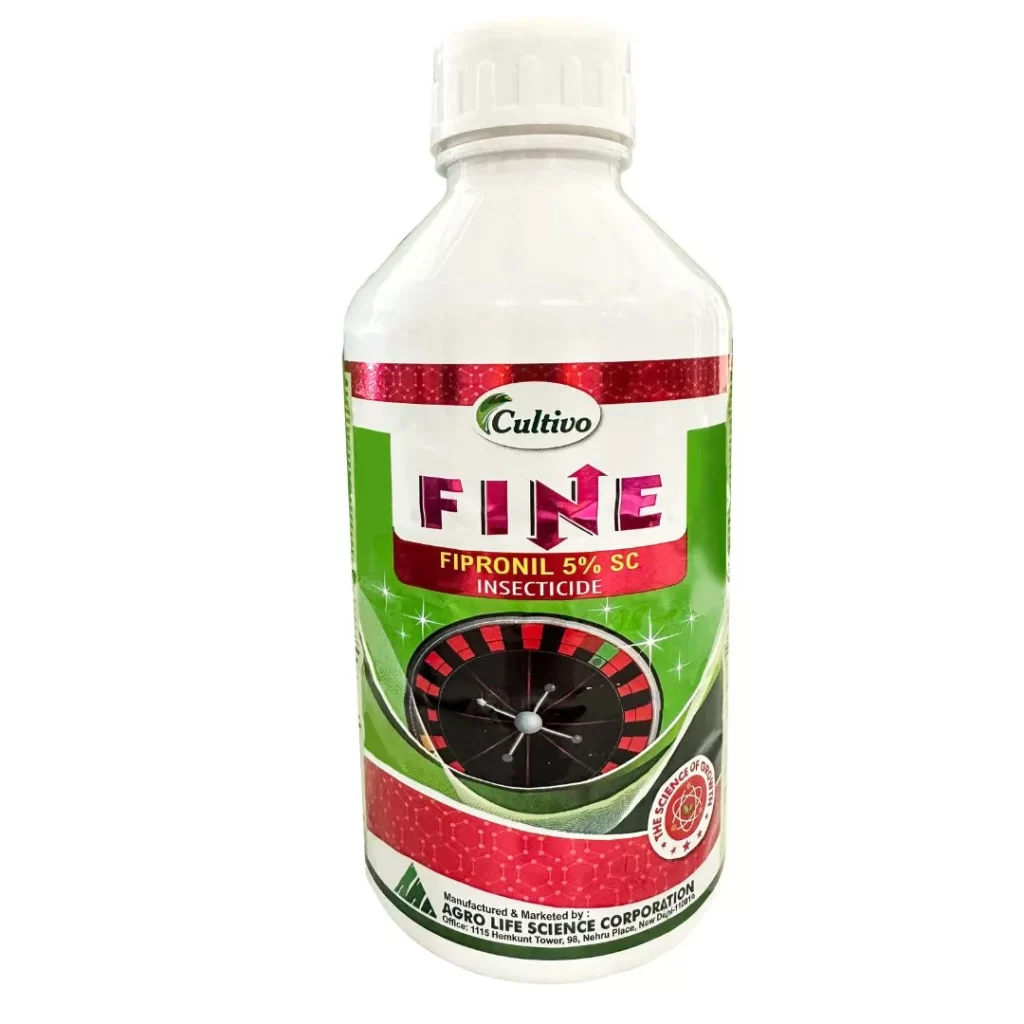


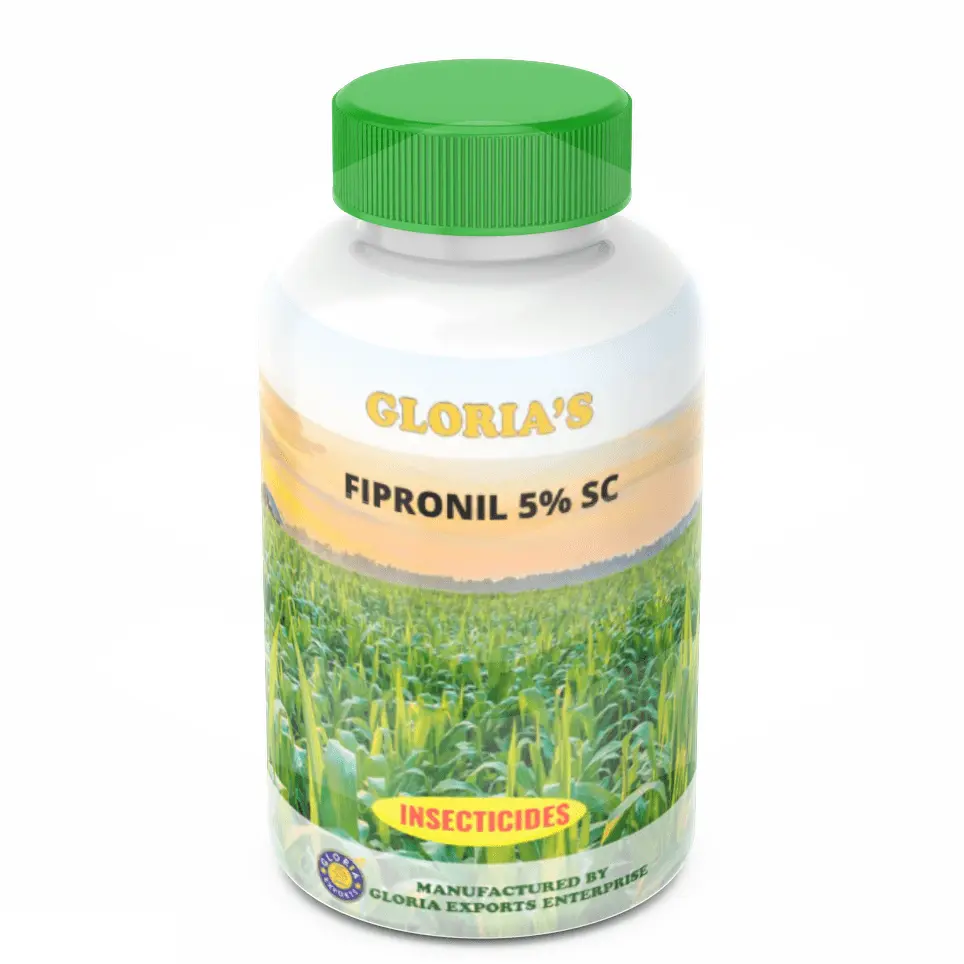
Emamectin Benzoate 5.0% SG




Broflanilide 30.0% SC
Imidacloprid 17.8% SL
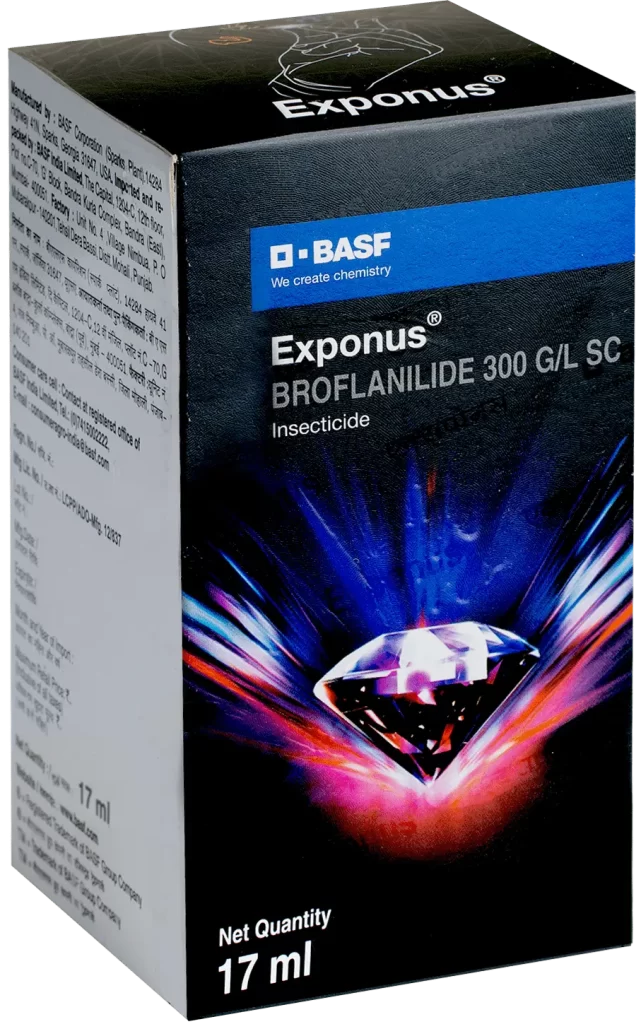

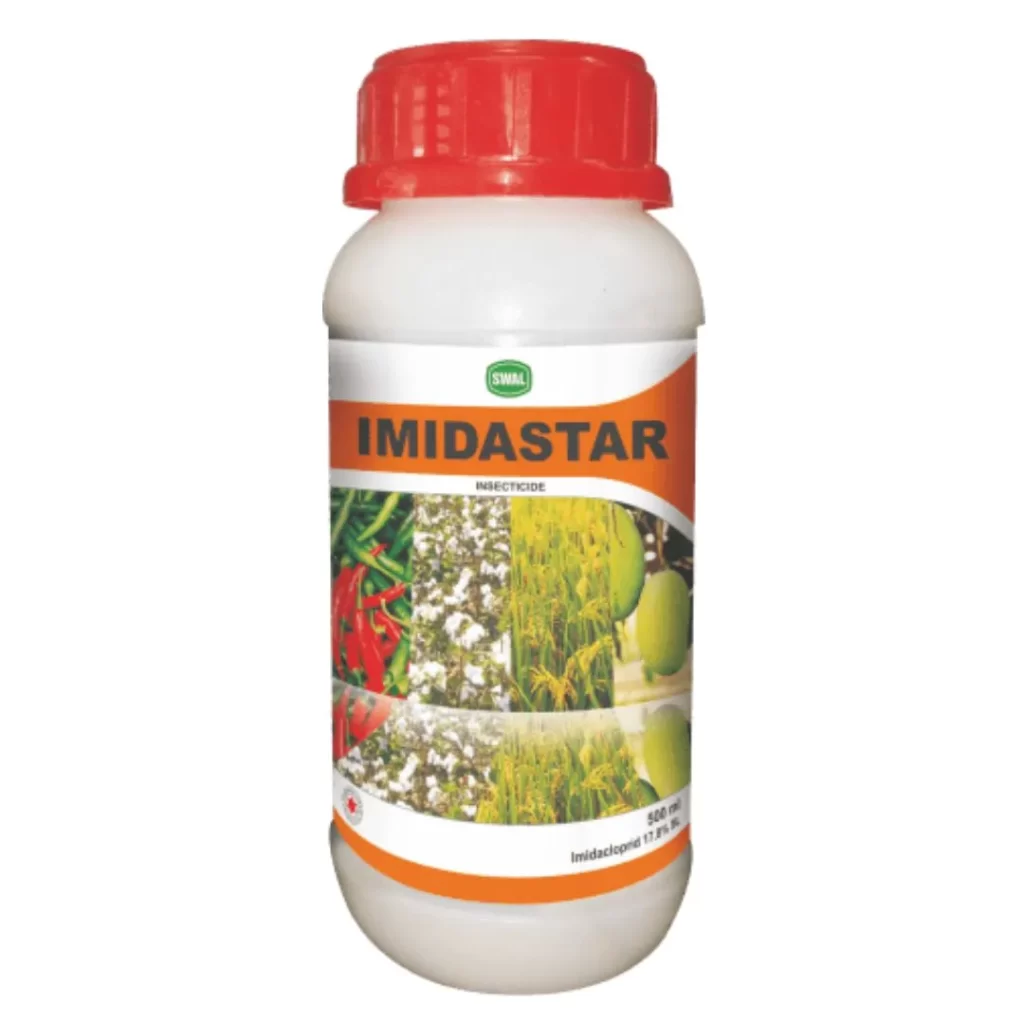

2. Application Techniques
Proper application of insecticides is critical for their effectiveness. When applying insecticides for thrips control, consider the following:
- Timing: Apply insecticides when thrips are most vulnerable, typically during the early stages of their lifecycle.
- Frequency: Follow label recommendations for application frequency to avoid overuse and resistance development.
- Method: Use sprayers that ensure thorough coverage of the plant, particularly the undersides of leaves where thrips often hide.
3. Safety Precautions
When using chemical controls, it is essential to follow safety guidelines to protect yourself, others, and the environment. Always wear protective clothing, including gloves and masks, and avoid applying insecticides during windy conditions to prevent drift. Be mindful of the potential impact on non-target organisms, including beneficial insects and pollinators.
Integrated Pest Management (IPM)
Integrated Pest Management (IPM) is a holistic approach that combines cultural, biological, and chemical methods to achieve long-term pest control. The goal of IPM is to reduce pest populations to manageable levels while minimizing the impact on the environment.
- Combining Methods: The most effective way to control chilli thrips is by integrating multiple methods. For example, you might combine cultural controls like crop rotation and sanitation with biological controls like predatory insects and selective use of insecticides. This multi-pronged approach ensures that thrips populations are kept in check while reducing the likelihood of resistance development.
- Monitoring and Thresholds: Monitoring is a key component of IPM. Regularly inspect your crops for signs of thrips and use sticky traps to monitor their populations. By establishing action thresholds—the population level at which control measures should be implemented—you can avoid unnecessary chemical applications and focus your efforts on preventing outbreaks.
- Long-term Control Strategies: IPM is not a one-time solution but a long-term strategy. By consistently applying IPM principles, you can maintain chilli thrips populations at manageable levels year after year. This approach not only protects your crops but also promotes a healthier, more sustainable farming environment.
Preventative Measures of Chilli Thrips
Preventing a chilli thrips infestation is always preferable to dealing with an established one. By implementing the following preventative measures, you can reduce the likelihood of a thrips outbreak in your garden or farm.
- Select resistant varieties, if available.
- Use sticky traps to monitor thrips populations.
- Alternatively, remove leaves from the infected plant and gently tap them over a piece of white paper.
- Remove heavily infested plants from the field.
- Keep the soil well irrigated and avoid excessive nitrogen fertilizer application.
- Avoid overuse of insecticides to preserve populations of beneficial insects.
- Avoid planting alternative hosts in the surroundings.
- Remove weeds in and around the field.
- Windbreaks can protect the fields from long-distance infestations.
- Till the soil to bring thrips pupae to the surface, exposing them to the sun.
Regular monitoring
Regular monitoring is essential for early detection of chilli thrips. Inspect your plants frequently, paying close attention to the undersides of leaves and new growth, where thrips are most likely to be found. Use magnifying tools to identify thrips, as they are often too small to see clearly with the naked eye. Early detection allows you to take action before the infestation becomes severe.
Quarantine Measures:
When introducing new plants to your garden or farm, it’s important to quarantine them for a period to ensure they are not carrying thrips or other pests. Isolate new plants in a separate area and monitor them closely for any signs of infestation. This practice can prevent the introduction of thrips to your existing crops.
Proper Irrigation and Fertilization
Stress caused by improper irrigation and fertilization can make plants more susceptible to thrips. Ensure that your plants receive the right amount of water and nutrients to promote healthy growth. Avoid over-fertilizing, as this can lead to lush, tender growth that is more attractive to thrips.
Use of Barriers
Physical barriers can be an effective way to prevent thrips from reaching your plants. Insect netting or row covers can be used to protect vulnerable crops, especially during periods when thrips are most active. Make sure the netting is fine enough to exclude thrips, and secure it tightly to prevent any gaps.
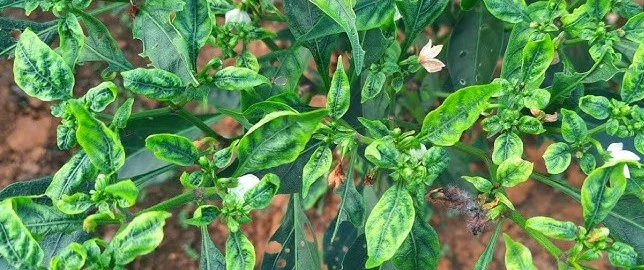
Conclusion
Chilli thrips are a challenging pest, but with the right knowledge and strategies, they can be effectively managed. By integrating cultural, biological, and chemical controls into an Integrated Pest Management (IPM) program, you can protect your crops and ensure a healthy, productive growing season. Regular monitoring, early detection, and preventative measures are crucial to preventing infestations and maintaining long-term control. Whether you’re a home gardener or a commercial farmer, the principles outlined in this guide will help you combat chilli thrips and safeguard your plants from their destructive effects.
By following these guidelines, you can effectively control chilli thrips and protect your crops from their potentially devastating effects. Remember, successful pest management is an ongoing process that requires vigilance, knowledge, and a commitment to sustainable practices.




